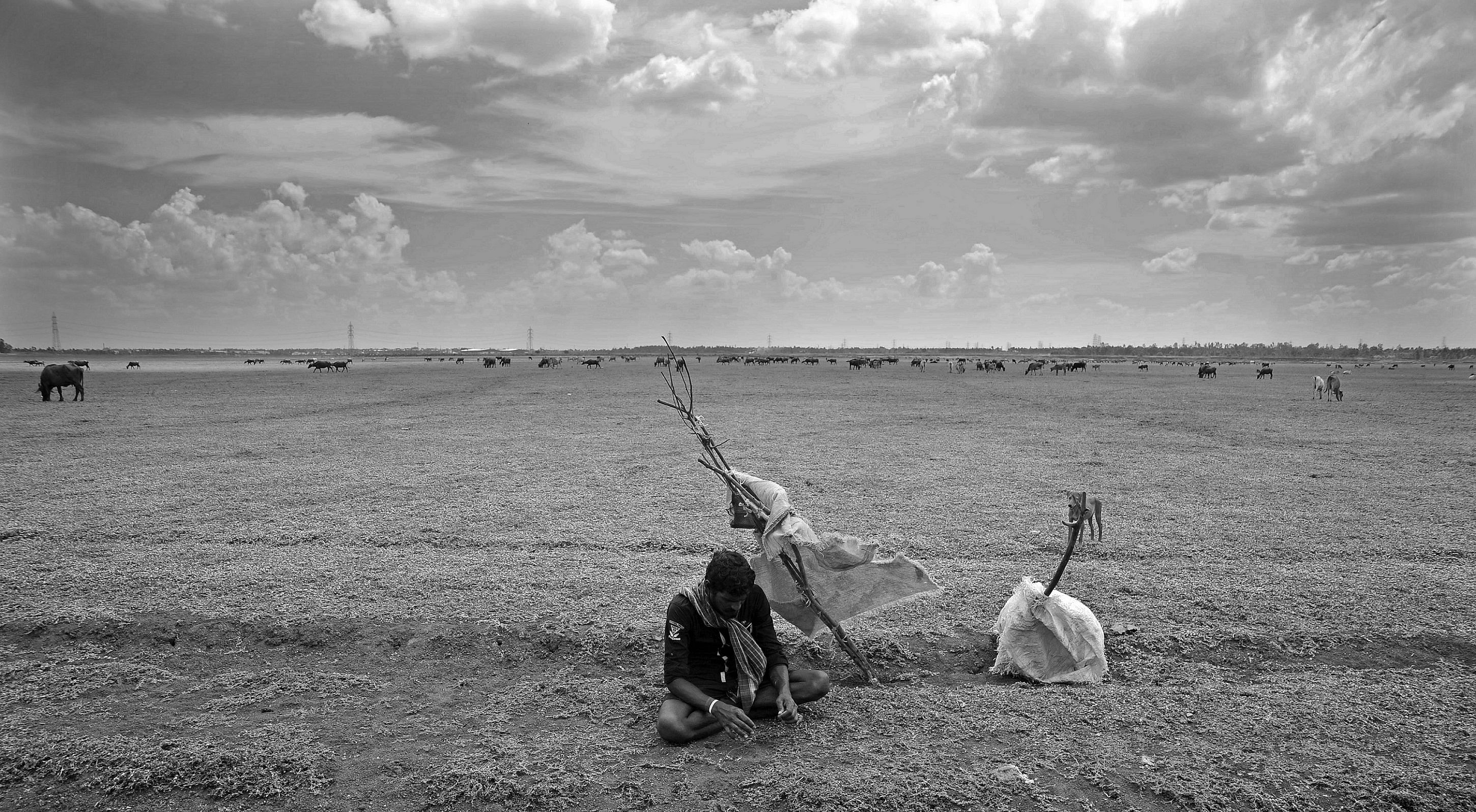When the taps run dry: Chennai's water crisis

Officials in the city of Chennai continue to try and find alternative sources of water - but the community continues to pray for rain.
A man takes a dip as a bird searches for food on a parched lake bed in Chennai

Chennai consumes more than 500 million litres of water and the unprecedented water crisis this year has forced the state administration to source nature’s elixir even from sand quarries and private wells in neighbouring districts. To solve the crisis, a‘special water train’carrying 25 lakh litres of Cauvery water from Jollarpettai in Vellore district reached Chennai on July 12.Two trains with 50 wagons have been allotted by the Indian Railways for transporting the water and these trains will make four trips a day making the total amount of water to 11 million litres. A senior official with the Vellore district administration told DH that the water from the Cauvery River and other sources is collected at a particular spot and brought to the pumping station from where it is pumped to the Jollarpettai station.
A woman waits next to a truck of water cans near Besant Nagar

Academy Award-winning actor and environmental activist Leonardo DiCaprio highlighted the Chennai water crisis on his social media handle quoting a BBC article saying, "Only rain can save Chennai from this situation."
The metropolitan city needs 11 tmcft of water every year, which is 880 million litres of water (mld) per day. To fight the crisis, the Chennai Metro Rail Limited has reportedly begun turning off its air-conditioning to reduce water consumption. The government's Hindu Religious and Charitable Endowments Department (HR and CE), which administers over 44,000 temples in the state, has asked officials of important shrines to conduct special 'yagas' among other rituals for propitiating Lord Varuna, the God of rains.
Women carry water pots from a government water supply tanker near Egmore in Chennai

Residents of the metropolis are forced to wait on the streets for several hours a day for tankers carrying water.
Early this year, 24 districts, including Chennai, were declared drought-affected by the state government. CMWSSB has around 900 water tankers, each taking 10 trips, to supply water to the city. As on May 29, the combined water storage in four major lakes of Chembarambakkam, Poondi, Red Hills and Cholavaram that supply water to the city is 76 million cubic feet as against 2,964 mcft last year, according to the CMWSSB.
Children walk alongside the Red Hills reservoir

There may be plenty of reasons behind the crisis such as climate change, fast-growing population, industrialisation, the real estate boom, encroachments or mere negligence.
The delayed monsoon has exacerbated the problem. This June was the driest in the last five years. Farming operations have been affected in many parts of the country. There is also a shortage of water for daily use. Water levels of two-thirds of the reservoirs in the country are below normal levels. A failed, or deficient, monsoon will add to the miseries, as some areas are still reeling from the drought of last year.